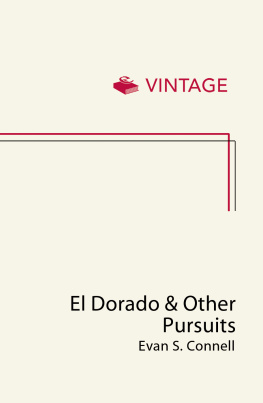THE GILDED MAN.
Table of Contents
CHAPTER I.
CUNDINAMARCA.
Table of Contents
While the early Spanish adventurers in America are justly charged with neglecting the true interests of colonization in their excessive greed for treasure, and thereby bringing harm to those parts of the Western Continent which they entered, it cannot be denied that their irrepressible seeking for the precious metals contributed directly to an earlier knowledge and a more rapid settlement of the country. The Spaniards thirst for gold led them into adventures which excite admiration and wonder as expressions of manly energy, while they offer the saddest pictures from the point of view of morals.
In every age gold has presented one of the strongest means of enticing men from their homes to remote lands, and of promoting trade between distant regions and the settlement of previously uninhabited districts. We have received from the earliest antiquity the stories of the voyage of the Argonauts, of the expedition of Hercules after the golden apples of the Hesperides, and of the settlement of the Phnicians in Spain, the gold of which they carried to the Syrian coast. For gold the Semitic navigators sailed from the Red Sea to Tarshish and Ophir.[1]
Portuguese seamen as early as the middle of the fifteenth century brought gold from the west coast of Africa; in order to find a sea-route to the gold-lands of India, Vasco da Gama sailed around the Cape of Good Hope; and in order to obtain a shorter route from Spain to India Christopher Columbus ventured out upon the Atlantic Ocean and there reached the new gold-land, America.
On Thursday, October 11, 1492, Columbus landed upon Watling Island, or Guanahani, one of the Bahama group, and on Saturday, the 13th, he wrote: Many of these people, all men, came from the shore, and I was anxious to learn whether they had gold. I saw also that some of them wore little pieces of gold in their perforated noses. I learned by signs that there was a king in the south, or south of the island, who owned many vessels filled with gold.[2]
This was the first trace of gold which the Europeans found in America. Cuba, where the Admiral next landed, afforded him no gold, but he found the precious metal so abundant in Hispaniola (Santo Domingo, or Hayti) that he was able, after he returned, to write from Lisbon to his sovereigns, March 14, 1493: To make a short story of the profits of this voyage, I promise, with such small helps as our invincible Majesties may afford me, to furnish them all the gold they need.
Hispaniola continued till the first decade of the sixteenth century to be the seat of gold production in the newly discovered western land. The consequences of this gold-seeking to the unhappy natives are well known, and need not be dwelt upon. The operations were continued on this island for only a very short time. As a result of the fearfully rapid disappearance of the aborigines, the supply of laborers began to fail, and the mines fell into disuse, although, according to Herrera,[3] they furnished to the mother-country, Spain, down to the discovery of Mexico, five hundred thousand ducats in gold.
The Admiral saw the mainland of South America for the first time on his third voyage, at Punta de Icacos, Trinidad, July 31, 1498, and found evidences of gold on the coast of Venezuela. The expedition of Ojeda in 1499 and 1500, although it sailed along the whole northern coast to New Granada, yielded only a small return, for after the largest pearls and gold pieces were turned into the royal treasury only five hundred ducats were left to be divided among one hundred and fifty sharers. A few months before Ojeda, an expedition had returned to Spain from the same region which had attained considerable material results, notwithstanding the small means with which it had been undertaken. Christoval Guerra and Pero Alonzo Nino, with a poor caravel of fifty tons and thirty-three men, had crossed the ocean to Venezuela and sailed along its coast from bay to bay, trading and bartering with the natives, and had thus acquired much gold and more than one hundred and fifty marks worth of pearls. They brought the report that while gold-dust was rare in the eastern part of the northern coast of South America, the metal was more abundant the farther west they went. When in 1500 Rodrigo de Bastidas of Santa Marta discovered the snow-covered foot-hills of the Cordilleras, his first thought might well have been that the noble metal which the warlike Indians of the coast wore so abundantly as a decoration was derived from those distant heights.[4]
While Ojeda was vainly trying to found a settlement near Maracaybo, the great Admiral was industriously preparing for a new voyage of discovery. He sailed in 1502, and on the 17th of August of that year he landed, after meeting much tempestuous weather, at Truxillo in Honduras. Sailing along the Mosquito Coast, beaten day and night by severe storms, Columbus reached Porto Bello and Chiriqui. Gold was found in quantities at Chiriqui and Veragua, in the vicinity of the famous mines of Tisingal, which the French filibuster Ravenau de Lussan mentioned as late as 1698.[5] The various efforts of the Spanish to plant colonies on the Isthmus and in western New Granada[6] had only insignificant results till Vasco Nuez de Balboa in 1511 assumed the direction of the colony in Darien, with a firm hand, but without any higher right, and with great sagacity immediately brought about closer relations with the surrounding Indian tribes. The tribe of Dabaybe on the Rio Atrato, who had many ornaments of gold, pointed to the west and south as the regions from which this gold came. Balboa, following the directions of the Indians, who hoped to get rid of their distrusted guests and send them to their nearest enemies, reached the coast of the Pacific Ocean on the 25th of September, 1543. There he seems to have heard a report[7] of a wealthy tribe which lived on the seacoast far to the south and used large sheep as beasts of burden. From this time forward the attention of the Spaniards was directed to the countries south of the Isthmus.[8]
Prescott says, in his Conquest of Peru, that Balboa learned in this way of the riches of that kingdom. His authorities are Herrera, who says: And this was the second report which Vasco Nuez received of the condition and wealth of Peru;[9] and the later Quintana. Pascual de Andagoya, who went in 1522 as far as Punta de Pinas, on the western coast of New Granada, says: He had received there exact accounts through traders and chiefs concerning the whole coast to Cuzco.[10] Still, it may be doubtful whether this notice does not refer to the civilized tribes of central New Granada, who carried their salt over the beaten mountain paths to the cannibal inhabitants of the Cauca Valley and received gold in exchange for it. Without forgetting that the llama was never used as a beast of burden in New Granada, the supposition that accounts of Peru had reached the Isthmus, notwithstanding the great distance, involves nothing impossible. Products of nature and art, and reports of conditions and events in single countries, are alike carried to great distances through war and trade.
Although languages and dialects were separated from one another by uninhabited neutral regions, prisoners of war could tell of what was going on at their homes; the booty would include a variety of strange objects; and traders traversed the country in the face of numerous dangers, visited the enemys markets, and carried their goods to them, with many novelties. This process was repeated from tribe to tribe; and in that way the products of one half of the continent passed, often in single objects, to the other half, and with them accounts of far-off regions, though changed and distorted by time and distance, into remote quarters.







